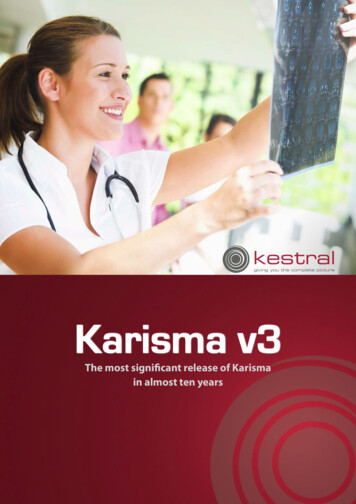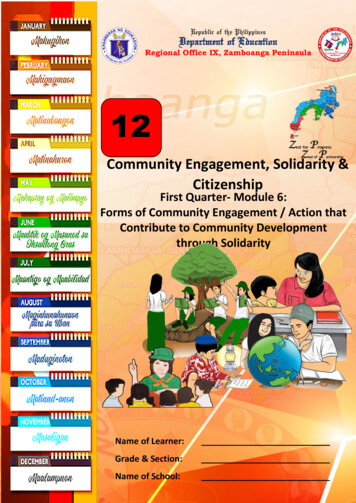
Transcription
Republic of the PhilippinesDepartment of EducationRegional Office IX, Zamboanga Peninsula12Zest for ProgressZ PCommunity Engagement, Solidarity &Citizenshipeal ofartnershipFirst Quarter- Module 6:Forms of Community Engagement / Action thatContribute to Community Developmentthrough SolidarityName of Learner:Grade & Section:Name of School:
Development Team of the ModuleWriter/s:Mariejane G. RevilEditor:Florence S. Gallemit, Marirose BretoEvaluators:Perga A. CadienteFlorence S. GallemitDr. JephoneYorongIllustrator:Name of illustrator/PhotographerLayout Artist:Peter Alavanza, Name of layout artistManagement Team:Dr. Isabelita M. Borres, CESO IIIDr. Eugenio B. PenalesSonia D. GonzalesDr. Ella Grace M. TagupaDr. Jephone P. YorongFlorence S. Gallemit
TargetCommunity Engagement provides an arena where students work in a professionalcapacity with community members, their peers, and the instructor of their course andrely heavily on teamwork and the skills that promote effective teambuilding towardsocial transformation.This module explains forms of community engagement that contribute tocommunity development through solidarity.After going through this module, you are expected to: Explain forms of community engagement/action that contribute to communitydevelopment through solidarity.ReviewAgree - Disagree. Under the first column are statements/concepts about the previoustopic. Put a check mark in the cell beside a statement or under the column agree if youAGREE with and a cross mark under the column disagree if you DISAGREE. Use youranswer sheet.Statements/Conceptsabout the topic1. The ingredientsidentified in the topicare what we call the“MUST Don’ts” inplanning a communityaction.2. Apart fromunderstandingcommunity dynamics, itis also important tohave a grasp of people’sapprehensions andfears.3. In trace connections,this provides a pictureof strengths only of thepeople who are involvedand what resourcesthey have.4. Common context, asit is the base in buildingAGREEDISAGREE
a different lens.5. The success ofcommunity action maydepend on how efficientand effective themembers and officersare.Lesson1Forms of Community Engagement / Action thatContribute to Community Development throughSolidarityDiscoverThe Forms of Community Action:Community EngagementThe term engagement denotes interaction, sharing, and relationships at differentlevels. It can be defined as the partnership between two parties, such as academicinstitutions and local communities for mutual benefits, and it is characterized byreciprocal relations. “Engagement is now a mindset ensuring that education can meet itsmultiple responsibilities . Creating a culture of learning, directing research, andteaching to sustainable development, and strengthening links with social partners arenow inescapable obligations for educational institutions.”What is Community Engagement?The ASEAN University Network (AUN) follows the definition given by the IndiananUniversity-Purdue University Indianapolis (IUPUI) Center for Service Learning.Community engagement has a four-part definition: active collaboration builds on the resources, skills, and expertise and knowledge of the campus andcommunity improves the quality of life in the communities in a manner that is consistent with the campus missionThis involves a paradigm shift from the traditional mode in which an educationalinstitution works. From being ivory towers, the educational institutions are expected tobecome a link or channel between the academic and community life. The idea focuses onengaged learning which refers to an educational methodology in which either part or allof the class objectives are learned by working on projects with a community partner.This is a type of education that puts classroom skills and knowledge into practice whileserving the community. It combines civic involvement with academic coursework in away that benefits both the student and the community.What makes community engagement a very rewarding experience is the amount ofenthusiasm coming from all participants? It affirms that community members wouldengage in activities that will bring impact to their community. Though sometimes, some
decisions are made for a community without asking first that community to provideinsight or comments. Leaders who are innovative practice exclusion (how are we going toimprove this community?) and are proactive enough to include all the stakeholdersduring the planning and decision-making process. A person who would like to engage ina particular community endeavor must first define the community and then begins theprocess of engaging that community in a conversation.A working definition of community engagement was provided by the Center forDisease Control and Prevention (CDC) when its edition of Principles of CommunityEngagement was published in 1997. The organization defined community engagementas: .the process of working collaboratively with and through groups of people affiliatedby geographic proximity, special interest, or similar situations to address issues affectingthe well-being of those people. It is a powerful vehicle for bringing about environmentaland behavioral changes that may improve the health of the community and its members.It often involves partnerships and coalitions that help mobilize resources and influencesystems, change relationships among partners, and serve catalysts for changing policies,programs, and practices.Based on this definition, the goals of community engagement are: To build trust,To enlist new resources and allies,To create better communication, andTo improve overall health outcomes as successful projects, evolve into lastingcollaborations.To engage a community in the discussion increases the level of awarenessamong its members; it allows individuals to advocate for their ideas and offers a formatto gather advice or guidance based on the community’s available expertise andexperiences.It is needed to guide the development of the project agenda by: Expanding or redefining the focus of the initiative,Identifying unexposed information, andCreating a network of revenue sources and funding partners.CitizenshipThe term citizenship denotes membership of a citizen in a political society. Themembership implies a duty of allegiance on the part of the member and a duty ofprotection on the part of the state. A citizen, on the other hand, refers to a member of ademocratic community who enjoys full civil and political rights and is accordedprotection inside and outside the territory of the state (De Leon, 1997).Basically, a citizen has both rights and responsibilities. Some of these rights includeright to life, right to worship, rights pertaining to moral or cultural values, economicrights, and political rights. However, a responsible citizen ensures not only awareness ofthese rights but also his/her obligations to pledge allegiance to the state, defend it,contribute to its development and welfare, uphold its constitution and obey laws,cooperate with duly constituted authorities, exercise rights responsibly, engage ingainful work, and register and vote. The principle of citizenship recognizes that peoplehave a moral responsibility to self, others, and community. Nevertheless, this moralresponsibility has to be matched and expressed with social responsibility. This meansacknowledging both individuals’ human dignity and social dimension of humanexistence (Tichy, McGill, and St. Clair, 1997). Thus, a citizen has to come out from
his/her own comfort zone and get engaged. A citizen cannot just stay home and watchother people suffer from social injustice.SolidaritySolidarity as a concept is still ambiguous, although in this discussion, the normativeperspective shall be applied and used as a positively valued model of relations betweensocial entities (Dobrazanski,nd). Generally, solidarity is about regarding our fellowhuman beings justly and respecting who they are as persons (BJPI, 2007). Based on theperspective that a person is a rational being; a person is in connection with other people,with the society, and with the environment. This means that a person has to relateresponsibly and act in solidarity with others and the whole humanity. His or her actsaffect others and consequently affect him/her as well.In most parts of the country and in the whole world, there is an indication of socialinjustice and inequality. Poverty is widespread. There is also increasing socialdisintegration and environmental degradation. In this kind of circumstance, thevoiceless and those with less income suffer the most. This situation calls for acts ofsolidarity, particularly for the affected sectors of the society – the poor farmers,fisherfolk, informal settlers, indigenous people, laborers, and the physically challenged.Based on the concept of Andrew Mason (as indicated by Dobrazanski, n.d.), acommunity is also called a moralized community. This viewpoint sees a community notsimply as an assemblage of people brought together by their common experience,practice, and shared values, but also as a collective body bonded together by solidarity.From the perspective of the Catholic Social Teachings, solidarity is about treasuring ourfellow human beings and regarding who they are as people of God. This perspectivecomes from the understanding that “we are all one family in the world.” As Saint JohnPaul II in Sollicitudo rei socialis said, solidarity is “building a community that empowerseveryone to attain their full potential through each of us respecting each other’s dignity,rights, and responsibilities. “Thus it makes the world a better place to live.AnalyzeInstructions:“Rap”1. Introduce/Summarize the lesson in a rap form.2. Write the rap in your answer sheet.3. Discuss/Explain the content of the rap.4. Give the generalization of the topic.5. See example below.
Rap: Mga Katulong sa PamayananYo! Yes! Yes! Yo! Kung may gulo sinongtumatakbo kundi pulis na kay bilis,Doktor! Doktor, ako ay may sakitpagalinginNang di bumabalik,Dok Lao! Dok Lao! Iyo nang gamutin ngsakit ng ngipin ay biglang gumaling,Halina! Halina! Tinda ko ay mura, bukodsa masarap, masustansya pa.Kamangmangan ay lunasan matiyagangguro ang Kailangan.Yo, Yes, Yes, Yo.Enrichment ActivityInstructions:1. Prepare three pieces of colored paper(yellow for the first question, blue for the second, and green for the third).2. Answer the following questions.What comes to your mind when you hear or read“community action”?What comes to your mind when you hear or read “formsof community action?”
What comes to your mind when you hear or read“community development?”RUBRICCRITERIADETAILSPOINTS /PERCENTAGEClarity of ContentHow relevant are the content/s.40%Communication StylesHow viable are the skills / styles or usage ofgrammar.40%Value of the ActivityHow much impact can it be to the reader/s.20%TOTAL100%NOTE: This RUBRIC may apply all activities in this module.ActivityPhoto Essay. Use your answer sheet.A. Relating to our discussion onthe forms of communityengagement/action, shareyour idea about this picture.
B. Say something about thisphrase “We Heal as One”, Whatform of community engagement/action is this? Explain.RememberThe Forms of Community Action:1. Community EngagementThe term engagement denotes interaction, sharing, and relationships at differentlevels.The ASEAN University Network (AUN) follows the definition given by the IndiananUniversity-Purdue University Indianapolis (IUPUI) Center for Service Learning.Community engagement has a four-part definition: active collaborationbuilds on the resources, skills, and expertise and knowledge of the campus andcommunityimproves the quality of life in the communitiesin a manner that is consistent with the campus missionBased on this definition, the goals of community engagement are: To build trust,To enlist new resources and allies,To create better communication, andTo improve overall health outcomes as successful projects, evolve into lastingcollaborations.It is needed to guide the development of the project agenda by: Expanding or redefining the focus of the initiative,
Identifying unexposed information, andCreating a network of revenue sources and funding partners.2. CitizenshipThe term citizenship denotes membership of a citizen in a political society. Themembership implies a duty of allegiance on the part of the member and a duty ofprotection on the part of the state. A citizen, on the other hand, refers to a member of ademocratic community who enjoys full civil and political rights and is accordedprotection inside and outside the territory of the state (De Leon, 1997).3. SolidaritySolidarity as a concept is still ambiguous, although in this discussion, thenormative perspective shall be applied and used as a positively valued model ofrelations between social entities (Dobrazanski,nd). Generally, solidarity is aboutregarding our fellow human beings justly and respecting who they are as persons(BJPI, 2007).EvaluationI. Multiple Choice. Choose the letter of the best answer among the given choices. Writethe chosen letter on your notebook as your answer sheet.1. What recognizes the principle of citizenship?A. Recognizes good citizenship in the name of social justice.B. Recognize societies of the world have become much more complex.C. Recognizes that people have a moral responsibility to self, other, andcommunity.D. Recognizes process that fosters participation of the marginalized anddisadvantaged sectors of the society.2. In democratic political community, what is the rightful and acceptable basis of allpower?A. The citizenry, the collective body of people.B. There is a growing application of rights-based approach.C. The educational institutions are now challenged to respond beyond theirtraditional role.D. Civil and political rights and is accorded protection inside and outside theterritory of the state.3. Basically, a citizen has both rights and responsibilities. The following are some ofthese rights, EXCEPT?A. Right to lifeB. Limited rightsC. Right to worship
D. Rights pertaining to moral or cultural values4. The ASEAN University Network (AUN), follows the given definition of communityengagement, EXCEPT?A.B.C.D.Active collaborationImproves the quality of life in the communitiesIn a manner that is consistent with the campus missionIt combines civic involvement with academic coursework.5. Based on the perspective of Dobrazanski about solidarity, is that a person is arelational being; a person is in connection with other people, with the society, andthe environment, what does this means?A. This means the concept thrives and has been extended to the setting of civicengagement.B. This means that a person has to relate responsibly and act in solidarity withothers and the whole humanity.C. This means acknowledging both individuals’ human dignity and the socialdimension of human existence.D. This means that the citizens have the power to make decisions directly orindirectly through their representatives.6. Community engagement as: the process of working collaboratively with andthrough groups of people affiliated by geographic proximity, special interest, orsimilar situations to address issues affecting the well-being of those people. Basedon the definition, the goals of community engagements are the following, EXCEPT?A.B.C.D.ToToToTobuild trustenlist new resources and alliescreate better communicationbecome a link or channel between the academic and community life7. In most parts of the country and in the whole world, there is an indication ofsocial injustice and inequality. Poverty is widespread. In this kind of circumstance,who suffer the most?A.B.C.D.The whole human community.The voiceless and those with less income.Fellow human beings and who they are as people of God.The citizens that are full and equal members of self-governing community.8. From the perspective of the Catholic Social Teachings, what is solidarity all about?A. About the acts that affect others.B. About the community to stick together in pursuing the same cause.C. About treasuring our fellow human beings and regarding who they are aspeople of God.D. About the people who are experiencing the same situation tend to connectwith each other and pursue a common goal and action.
9. As a Filipino citizen, what are the manifestations of solidarity toward theattainment of the common good?A.B.C.D.A citizen has to come out from his/her own comfort zone and get engaged.Opens the gate for integration of the concept of citizenship and development.Community engagement and good citizenship in the name of social justice.Empowers everyone to attain their full potential through each of usrespecting each other’s dignity, rights, and responsibilities.10.Based on the concept of Andrew Mason (as indicated by Dobrazanski, n.d.),a community is also called a moralized community. What does this means?A.B.C.D.Engage a gainful work.Exercise rights responsibly.A collective body bonded together by solidarity.Uphold its constitution and obey laws, cooperate with duly constitutedauthorities.II. True or False. Write T if the statement is TRUE and F if the staement is FALSE.1. Solidarity is a member of a democratic community who enjoys full civil andpolitical rights.2. Citizenship is about regarding our fellow human beings justly and respecting whothey are as persons.3. A citizen has both rights and responsibilities.4. Community engagement builds on the resources, skills, and expertise andknowledge of the campus and community.5. In a democratic political community, the rightful and acceptable basis of all poweris the citizenry, the collective body of people.Additional ActivityInstructions: Below was the song entitled “Magkaisa” by ReynanDal-anay from the album “The Voice Kids Season 2”. Write a reflectionand answer the questions that follow.
Isa lang, angkan na ating pinagmulanTayong lahat ay magkalahiSa unos at agos ay hwag padadalaPanahon na, ng pagkakaisaKahit ito, ay hirap at dusaMagkaisa at magsamaKapit kamay sa bagong pag-asaNgayon may pag-asang natatanawMay bagong araw bagong umagaPagmamahal ng diyos isipin mo twinaPanahon na ng pagkakaisaKahit ito ay hirap at dusaMagkaisa at magsamaKapit kamay, sa bagong pag-asaMay pag-asa kang matatanawBagong umaga’t bagong arawSa atin siya’y nagmamahalPanahon na, ng pagkakaisaKahit ito ay hirap at dusaReflection:
What does the song imply? Explain.Why do people bond and act together?Cite phrase/s or lyrics from the song that tackles about:Community EngagementSolidarityCitizenship
Key Answer1. C2. A3. B4. D5. B6. D7. B8. C9. C10. CTrue or False1. F2. F3. T4. T5. TReviewMultiple ChoiceAgree /Disagree1. Disagree2. Agree3. Disagree4. Disagree5. AgreeEvaluationAnswers vary inAnalyze and other activities.References:Padilla, Reynaldo A. “Community Engagement, Solidarity, and Citizenship” by JFSPublishing Services, 2016Melegrito, Ma. Lourdes F. and Mendoza, Diana J. “Zeal For Action – CommunityEngagement, Solidarity, and Citizenship” by Phoenix Publishing House, Inc., 2016
Region IX: Zamboanga Peninsula Hymn – Our Eden LandHere the trees and flowers bloomHere the breezes gently Blow,Here the birds sing Merrily,The liberty forever Stays,Here the Badjaos roam the seasHere the Samals live in peaceHere the Tausogs thrive so freeWith the Yakans in unityGallant men And Ladies fairLinger with love and careGolden beams of sunrise and sunsetAre visions you’ll never forgetOh! That’s Region IXHardworking people Abound,Every valleys and DaleZamboangueños, Tagalogs, Bicolanos,Cebuanos, Ilocanos, Subanons, Boholanos,Ilongos,All of them are proud and trueRegion IX our Eden LandRegion IXOur.Eden.Land.The Footprints PrayerTreesby Joyce KilmerOne night I had a dream. I dreamed I think that I shall never seethat I was walking along the beach A poem lovely as a tree.with the LORD.A tree whose hungry mouth is prestIn the beach, there were two (2) sets Against the earth’s sweet flowingof footprints – one belong to me and breast;the other to the LORD.A tree that looks at God all day,Then, later, after a long walk, I And lifts her leafy arms to pray;noticed only one set of footprints.A tree that may in Summer wear“And I ask the LORD. Why? Why?A nest of robins in her hair;Why did you leave me when I am sadand helpless?”Upon whose bosom snow has lain;And the LORD replied “My son, My Who intimately lives with rain.son, I have never left you. There wasonly one (1) set of footprints in the Poems are made by fools like me,sand, because it was then that I But only God can make a tree.CARRIED YOU!1
everyone to attain their full potential through each of us respecting each other's dignity, rights, and responsibilities. "Thus it makes the world a better place to live. Analyze Instructions: "Rap" 1. Introduce/Summarize the lesson in a rap form. 2. Write the rap in your answer sheet. 3. Discuss/Explain the content of the rap. 4.


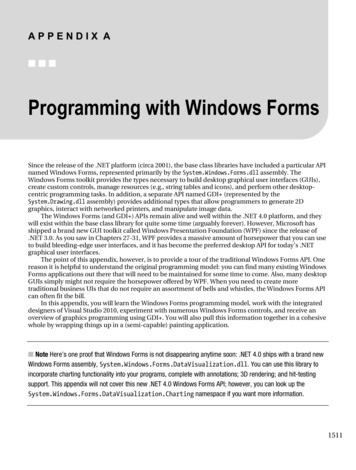
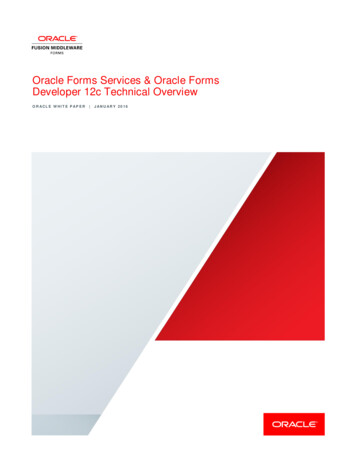

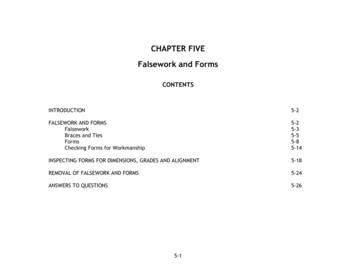
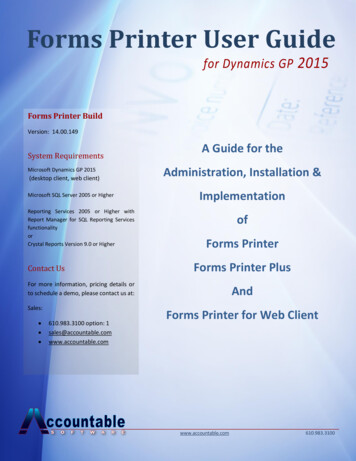
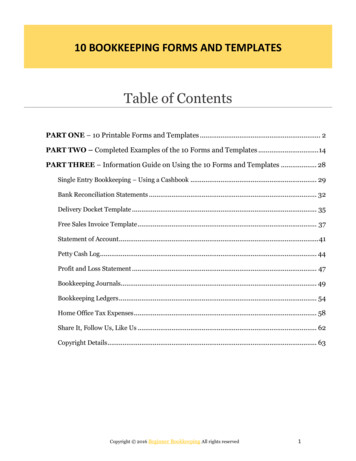
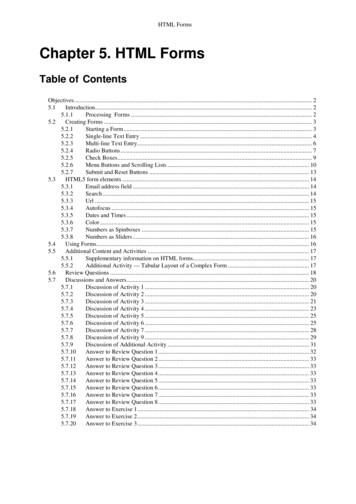
![[MS-OFBA]: Office Forms Based Authentication Protocol](/img/3/ms-ofba.jpg)
